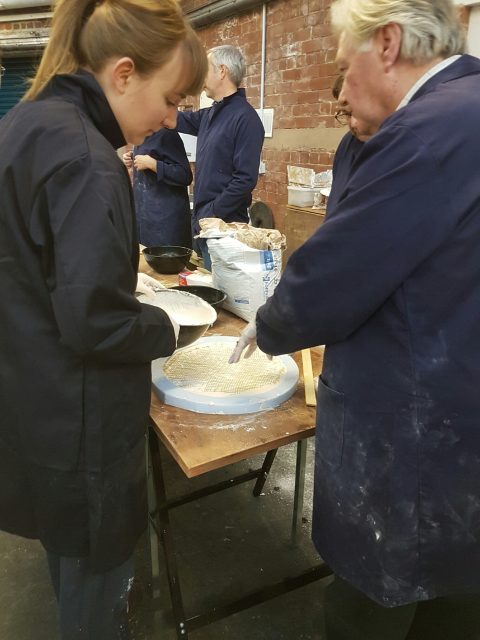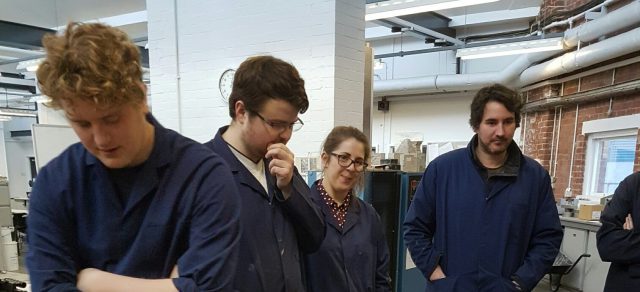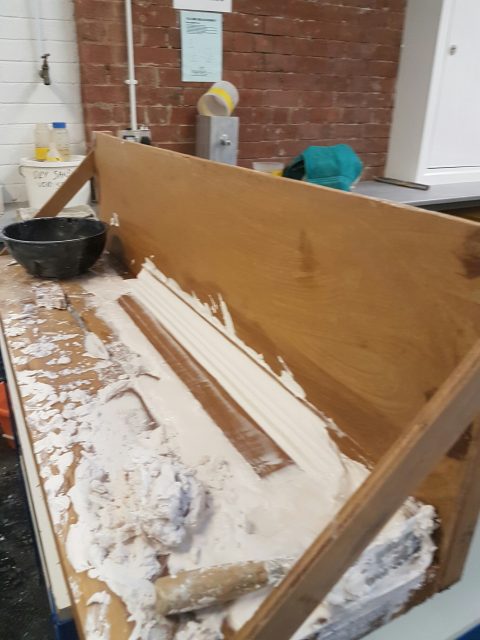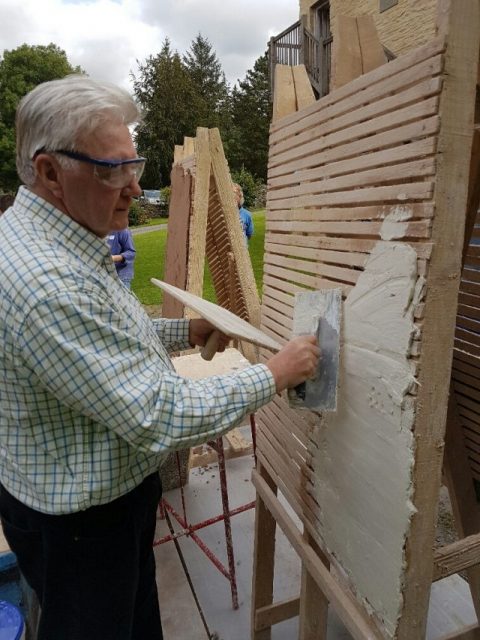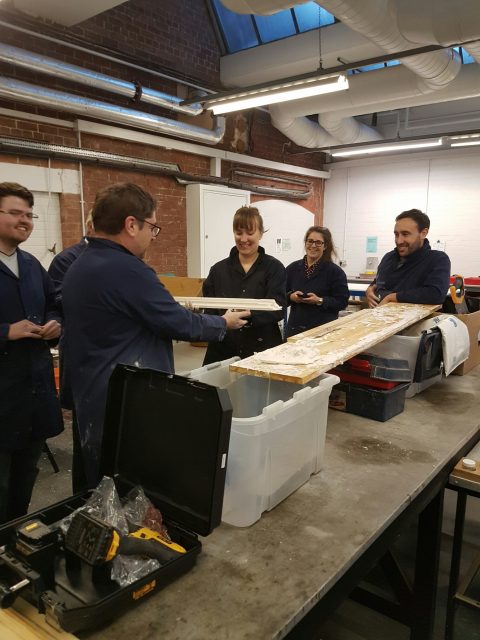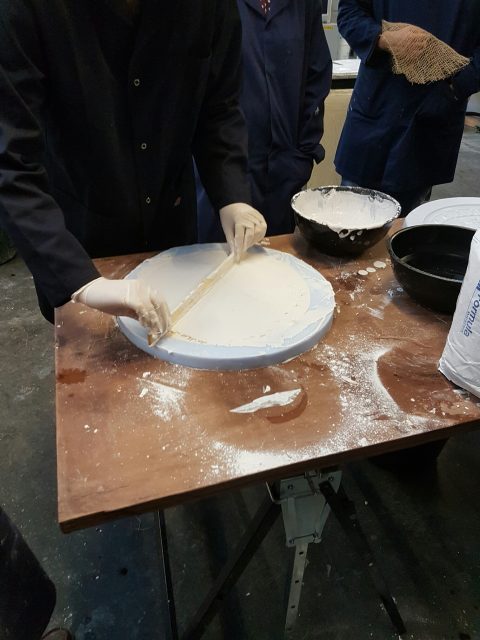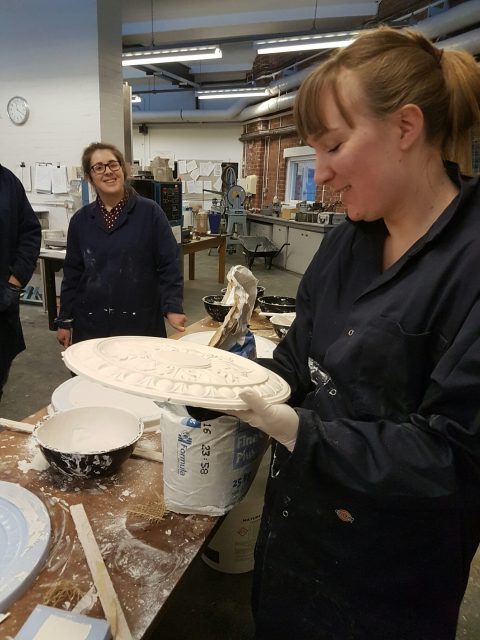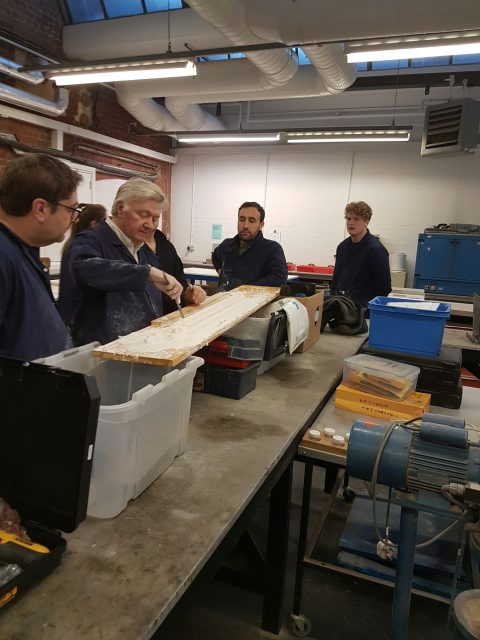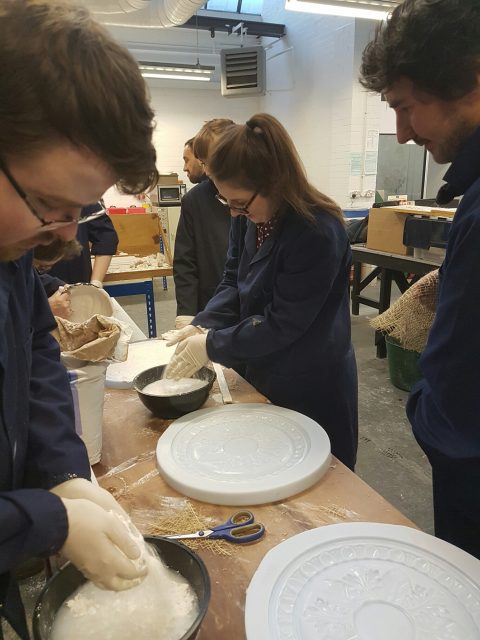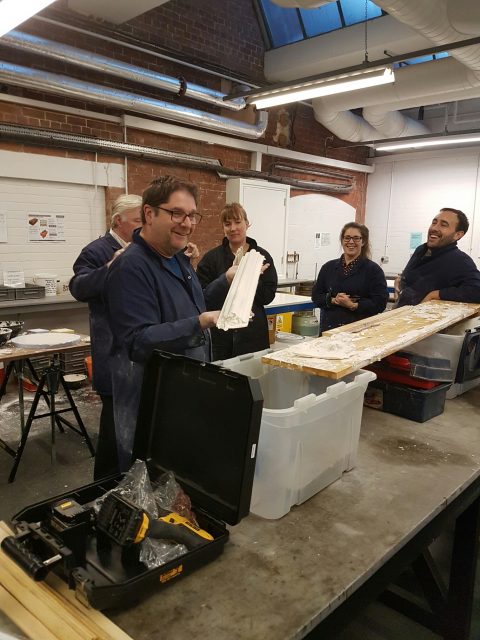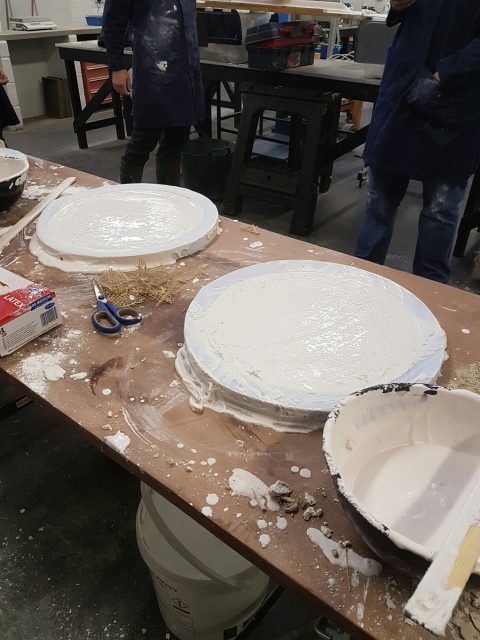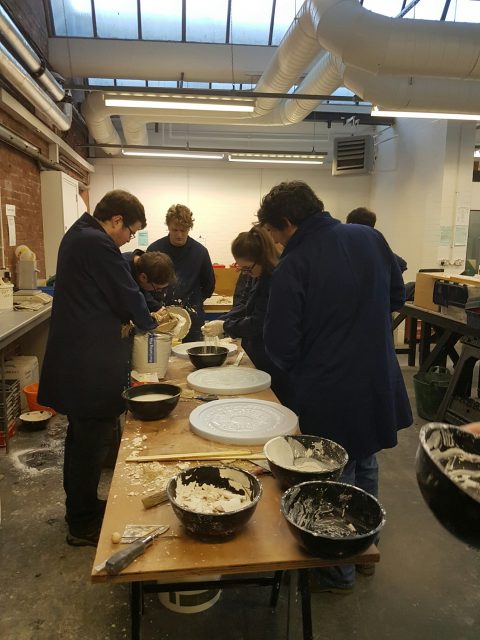The focus of this taster day was the repair of historic plasterwork including lath and plaster, repairing and replacing decorative cornices.
This taster is used as an introduction to the unit on conservative repair, we provided this taster as part the Masters programme in building, restoration and adaptation for UCLan.
Invited by Chris O’Flaherty course leader, we provided a taster course focused on the repair and maintenance of historic plasterwork.
Plasterwork discussions
This included discussions with the students:
- Water penetration,
- Damp and wet rot,
- Dry rot,
- Insect infestation and the effect on lime plasters used in decorative plastering including plaster lath walls.
Exploring the options and methods available for repairing and stabilising sagging ceilings, and decorative plasterwork.
Demonstrated with the aid of a panel, correct lath fixing and spacing where shown.
Hair in plaster is applied correctly to the lath.
- The first coat called ‘a pricking up coat’, Is scratched to form a diamond pattern and left to set.
- A second coat called a ‘floating coat’ was applied, the plaster is ruled and ‘devil’ floated providing a key.
A ‘hands on’ session for the students focused on moulds, casting plaster and fittings.
Fixing a repair to decorative cornices and/or panels, use of a bench and box moulds in small sections are to achieve desired cast.
In addition a lively discussion about traditional setting out and fixings, resulted in the students reviewed the advantages and disadvantages of both running plaster in situ (on the wall) or casting on a bench.
Awareness of materials and methods that are employed show some challenges in reproducing ornate plasterwork.
Using Room Temperature Vulcanization (RTV) silicone mounds, the students produced centre piece roses.
We express our appreciation to all the staff and technicians who provided us with the workshops at the Harris Building.


